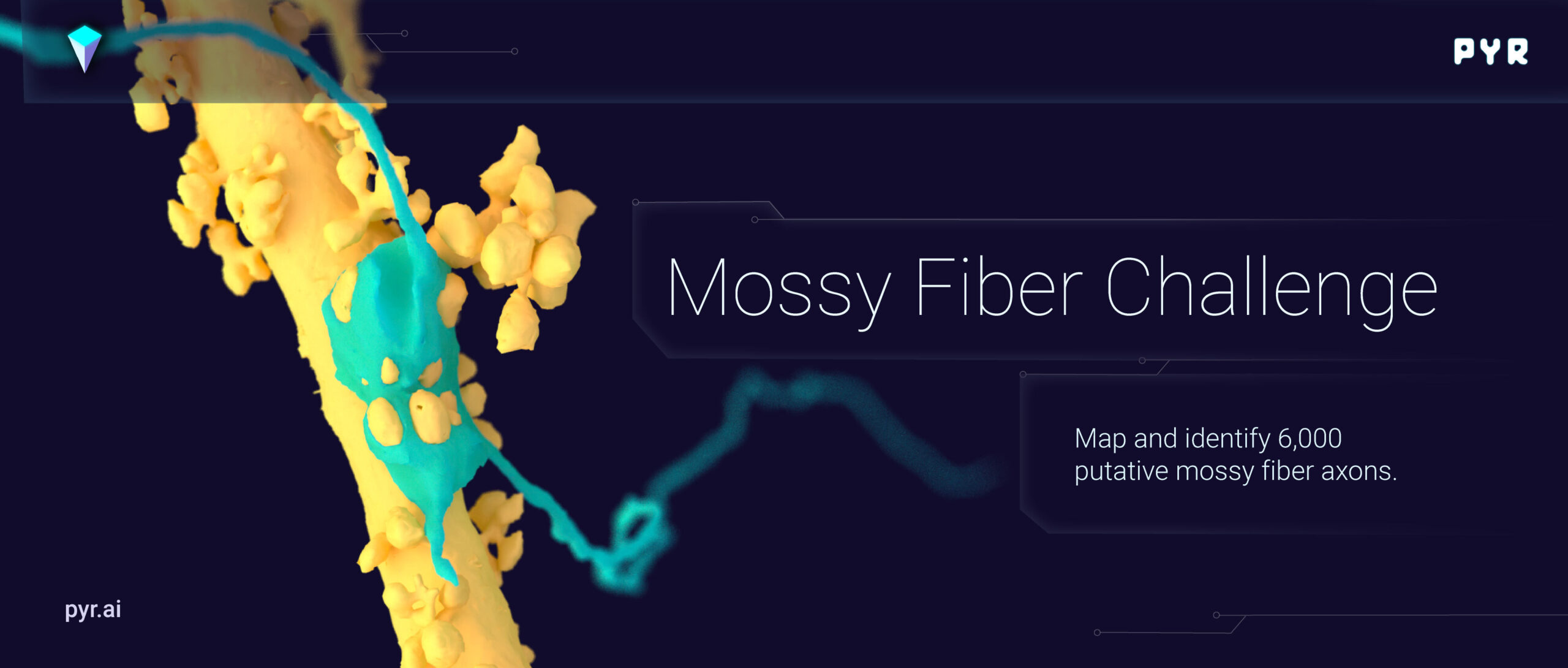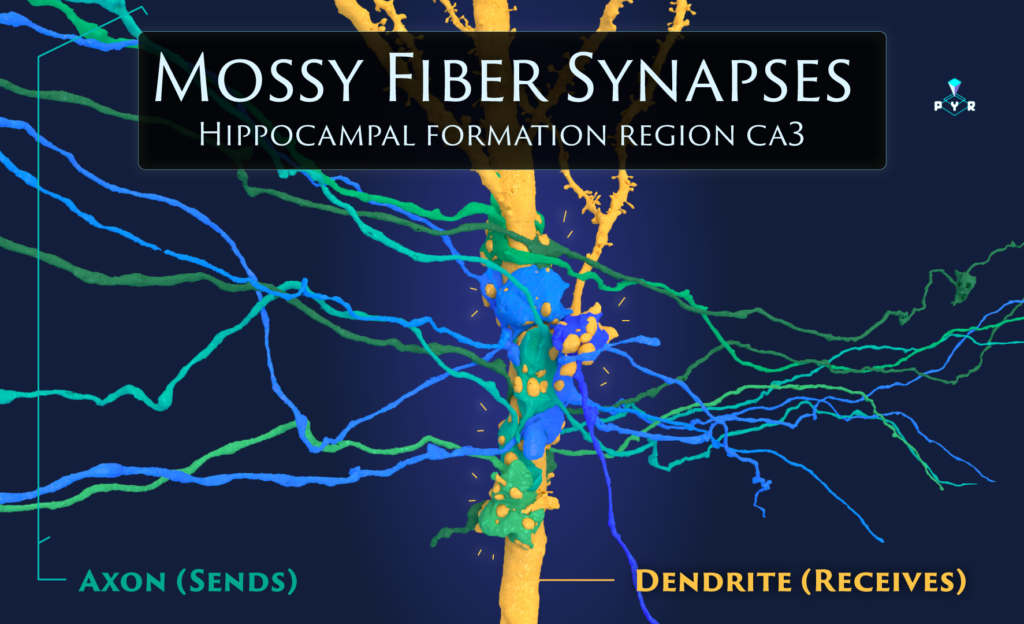
For all those who have been enjoying proofreading in our CA3 dataset, we hope you’re up for our next challenge – proofreading mossy fibers!
The CA3 is a region of the hippocampus — a seahorse-shaped structure in the brain important for retaining short-term memories.
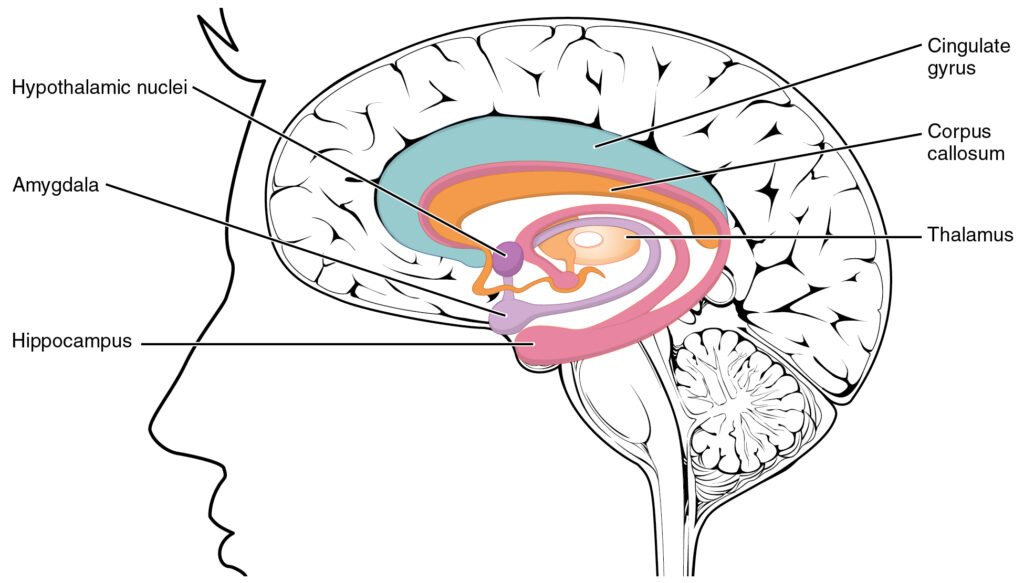
Mossy fibers are uniquely shaped long axons that originate from dentate granule cells in the dentate gyrus, another part of the hippocampal formation, and carry information to the CA3 region.
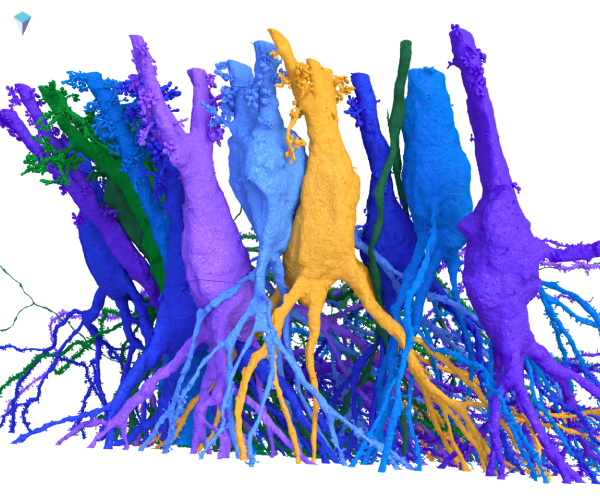
Mossy fibers are easily identifiable in the CA3 dataset by their synaptic connections with thorny pyramidal cells. These pyramidal cells have clusters of bulb-like spines near the soma called “thorny excrescences” which join like puzzle pieces with the mossy fibers’ giant boutons.
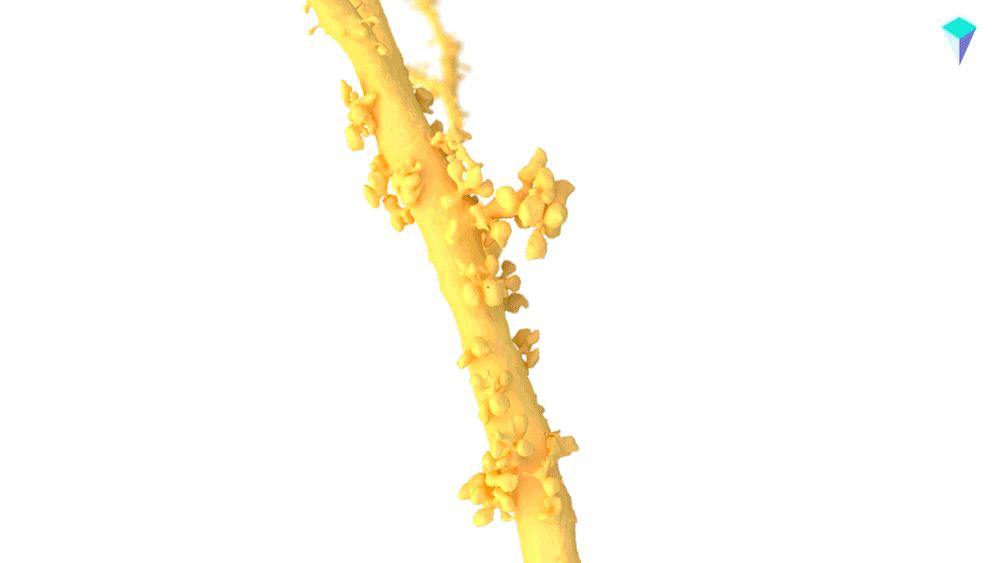
These boutons are also easily identifiable when viewing their EM images, where you can see hundred of vesicles tightly packed together inside them.

Mossy Fibers have approx. 1 to 3 of these boutons strung like large beads on an smooth branch in the CA3 dataset.

Proofreading Instructions
For this challenge, we will be identifying cells in our dataset as mossy fibers (or not!). For each task, please determine whether the segment provided is a mossy fiber.
For each task:
- 👍 Mossy Fiber:
- 👍 Proofread
- 👍 Label as “MF”
- ❌ Not a Mossy Fiber
- ❌ Don’t Proofread
- 👍 Label as “Not_MF”
When proofreading a MF look thoroughly at the bouton(s) to make sure they are proofread as well!

Image credit: Krzysztof Kruk
Unlike our last Challenge, for the MF Challenge we will be proofreading just one segment per task. One caveat: if your cell has a merger on it (that is also a mossy fiber) please proofread both.
‼️Another note: If you encounter a small mossy fiber bouton with no axon/branch that is cut off at the edge of the dataset, use the “Too Small” label. Here are some examples: https://play.pyr.ai/#!middleauth+https://global.daf-apis.com/nglstate/api/v1/4747340779880448

More CA3 Science!
For a more in-depth explanation of the hippocampus, CA3, and the cells within our dataset, you can check out this video:
Onward to our latest Challenge! For science!

